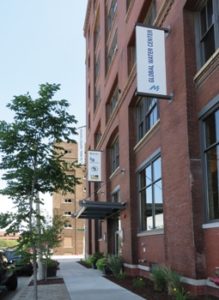A new economic investment analysis of the Water Technology District in Milwaukee’s Walker’s Point neighborhood found that $211.6 million worth of development has occurred since 2012 when it became the epicenter of water technology and freshwater research.
The analysis, released Thursday, was conducted by The Water Council, the Wisconsin Economic Development Corporation and the University of Wisconsin-Milwaukee.
“When moving around this area of Milwaukee you can easily see the transformation that has occurred with the renovation of old buildings and the location of new businesses,” said Dean Amhaus, president and chief executive officer of The Water Council. “Now, for the first time, we have actual numbers to back-up what has been evident to the eye.”

The analysis, which does not include any economic impact multiplier, focused on the impact of investments related to water technology, their associated actions, their place and their time. The time period of the analysis extends between 2010 and 2014. It encompasses portions of Walker’s Point, the Fifth Ward and the Harbor District. The study area is bounded to the north by the Menomonee River, to the east by the Inner Harbor, to the south by Greenfield Avenue, and to the west by Interstate 43/Interstate 94. The report defines these boundaries as “The Water Technology District.”
“Too often the assessment of economic development impact starts and ends with the jobs produced or capital investment made as a direct result of a single project. Little attention is paid to the indirect benefits of economic development strategies once deployed,” said Lee Swindall, vice president of business and industry for the Wisconsin Economic Development Corporation. “That’s what makes this analysis unique and it’s what defines Wisconsin’s water technology cluster as a textbook case study on the profound impact of a comprehensive cluster development approach.”
The analysis also found the following:
• Since 2010, private investments have totaled $108.4 million; private/public tools have leveraged $25.5 million of investments; and, $77.5 million worth of public funds have secured financing, rebuilt infrastructure or funded TIDs.
• In the district, property values increased by 16.6 percent, or $56.6 million. The Walker’s Point neighborhood saw a 12.8 percent increase overall, while the city of Milwaukee saw an 11.1 percent decrease.
• Of the 126 development projects in the District, 111 were valued at less than $1 million. These small-scale investments are clustered along South 1st and 2nd streets and West Pittsburgh Avenue.
“UWM, business and civic communities are collaborating in ways that we have not seen before,” said UWM chancellor Mark Mone. “The results are clear: this level of partnership has accelerated the Water Technology District and the region in remarkable ways. We’re bolstering the area’s economic vitality and making lifelong differences to our students through research opportunities, our alumni who are leading the way in the water sector, and all those who live and work in the district.”